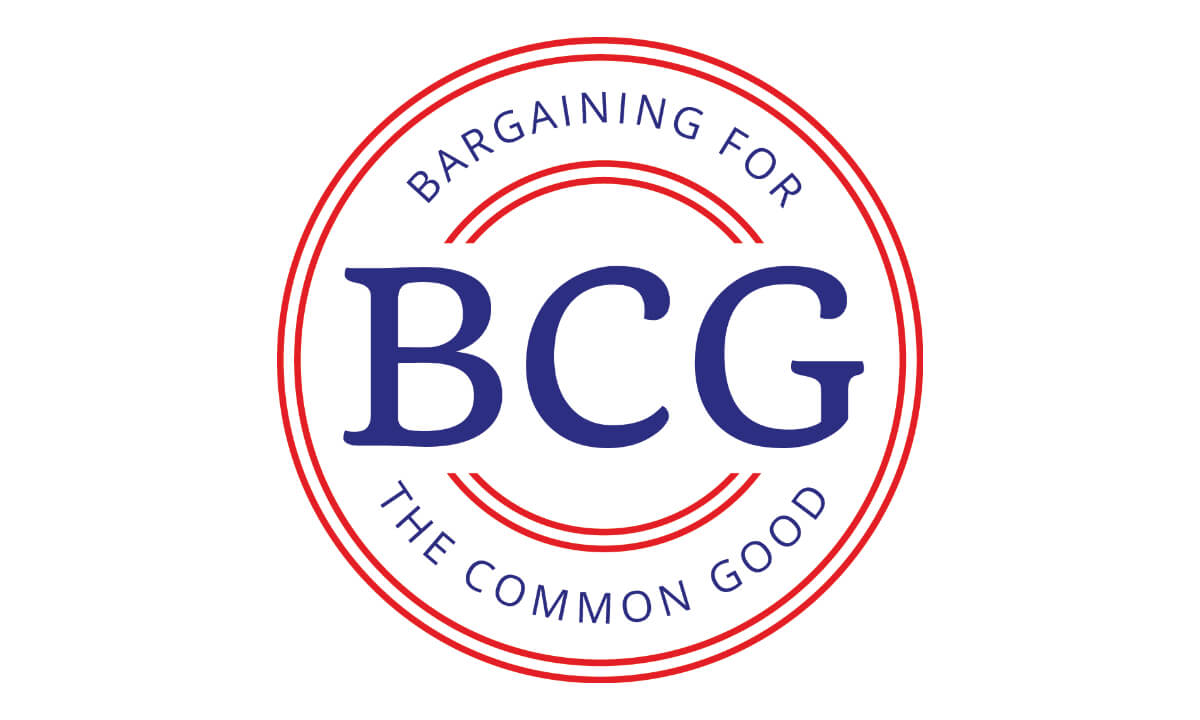Bargaining for the Common Good in the Coronavirus Era
by Brian Kettenring
We’re thrilled to bring you our most ambitious issue of The Forge to date, focused on Bargaining for the Common Good, one of the most important strategic developments on the left of recent years. By now, the decline of the labor movement from 39.2%1 density in 1955 to 10.3%2 today is well known. The fate of grassroots organizing outside the workplace since World War II is more uneven – certainly with more high points, like the civil rights movement – and yet it has, on balance, lacked the economic and political power to resist the ravages of racial capitalism over the past 75 years. Regardless of past performance, at the time of writing we are faced with crisis layered upon crisis layered upon crisis, and then some. It’s hardly controversial to point out that we need new strategies, new formations, more vision, and bold action backed up by a democratic movement, to alter course. The Bargaining for the Common Good approach, outlined in detail and from multiple vantage points in this issue of The Forge, helps to point the way forward.
The work of Bargaining for the Common Good is unique in a number of ways, one of these being the way that it engages with a traditional tool in the often staid labor organization toolbox – bargaining – and renders it visionary, participatory, and intersectional. This intersectionality comes to life through the linking of multiple fights with a common analysis and approach, and takes the relative weakness of our various segments of the left and turns these into a strength by weaving a larger tapestry from the component parts. There are several other innovative aspects to the BCG work – and these are laid out in this issue of The Forge – but we’ll end by noting an important element of this issue, which is the call to action. This issue aims not only to help us understand the approach and the issues at hand, but to invite you and other readers to join the fight.
Finally, we share with you below some basic background on the Bargaining for the Common Good approach. It will serve you well as you explore this issue and plot your next strategic move!
Many thanks to Stephen Lerner and Sara Myklebust of the Kalmanovitz Initiative for Labor and the Working Poor at Georgetown University, who served as co-editors for this edition of The Forge.
Why Bargaining for the Common Good?
by BCG Team
This is a moment of incredible, rapid change and challenges. Powerful individuals and corporations are taking over public services, profiting while draining the resources we have to spend on the essential needs of our communities like education and healthcare. Universities have begun serving corporate interests more than the common good. Wealthy, private investors and corporate landlords took advantage of the Great Recession to drive our national housing crisis, threatening the middle class and working families. Climate change and environmental racism threaten our homes, livelihoods, and the very existence of our communities, particularly communities of color.
We must unite to take on these challenges. Union members are recognizing their dual roles as both workers and key leaders in their communities. In a changing and stratified economy, we are expanding collective bargaining to address the challenges we face as workers, neighbors, and families. Labor and community organizations are collaborating to advance unified demands that are relevant to both workers and the broader community. This way of coming together is called Bargaining for the Common Good (BCG).
In 2019, we saw the power and energy of BCG in the Los Angeles and Chicago teachers’ strikes that brought community members to the bargaining table with unions and thousands into the streets to take on corporate power and fight for the schools, housing, and cities we all deserve.
How are unions and community groups Bargaining for the Common Good?
At the center of BCG campaigns are intentional, long-term alignments between unions and community organizations. Connecting at all levels starting with membership, they build strong, lasting partnerships based on trust and a shared analysis of the systemic problems we are confronting and the solutions necessary to transform our communities. BCG campaigns are centered around joint community-labor planning that brings diverse partners to the table in union bargaining, builds power, and addresses the crises we all face. BCG work centers racial justice because we must collectively confront structural racism to create a powerful, unified movement.
Building strong, sustainable relationships isn’t easy. Effective BCG campaigns require unions to educate their members about their dual identities as workers and community members, seeing the bargaining process as a tool that engages both. Community organizations must educate members about unions and how they can bargain together. Both groups must work to overcome any historic animosity or mistrust to develop a shared framework, from membership to leadership, that sees corporations and the wealthy elite as the perpetrators of injustice in our communities and workplaces.
The BCG network is made up of three convening organizations, the Kalmanovitz Initiative for Labor and the Working Poor (KI) at Georgetown University, the Center for Innovation in Worker Organization (CIWO), School of Management and Labor Relations, Rutgers University, and the Action Center on Race and the Economy (ACRE). The Network is led by the Bargaining for the Common Good Advisory Committee, made up of dynamic leaders in labor, community, housing, racial justice and movement work across the country.
Sign up for the BCG network list serv at http://www.bargainingforthecommongood.org/get-involved/
1https://www.jstor.org/stable/2523761?seq=1
2 https://en.wikipedia.org/wiki/Labor_unions_in_the_United_States
A Call to Action in This Moment

